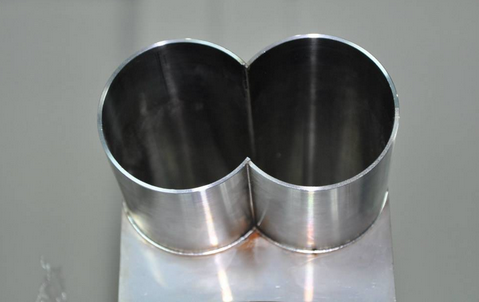
Laser welding machine is mainly used to use the laser beam with extremely high energy density as a heat source to achieve the welding effect. It is one of the important aspects of laser material processing technology application. The welding ability of the laser welding machine is directly affected by the parameters, and the quality of the parameters determines the welding quality. So, what are the main process parameters of the laser welding machine?
The energy of the laser pulse: refers to the maximum output energy of a single laser pulse, the unit is J (Joule). This is a main parameter of the laser, which determines the maximum energy that the laser can produce. According to the use of the mold repair, the laser energy can meet the needs of any occasion below 70J, and the large energy is also in vain, or fundamentally Not used, and the increase in the volume of the laser power supply and the volume of the heat sink reduces the efficiency of the power supply.
Laser spot focus diameter: This is an extremely important parameter that reflects the design performance of the laser, in units of (mm), which determines the power density and processing range of the laser. If the optical design of the laser is reasonable and advanced, the laser energy is concentrated, the focus is accurate, and the laser spot diameter can be controlled in the range of 0.2mm-2mm. Whether the focus diameter of the laser can be controlled at 0.2mm is a strict one for the laser generator. test. Lasers generally designed in China, because they only want to reduce the cost, therefore, the laser processing of the device is simple, the design is not rigorous, the laser is divergent in the cavity, resulting in difficulty in accurate focusing, and the laser spot diameter of the laser output is not up to standard. It is said to be 0.2mm, but can only reach a minimum of 0.5mm. Due to the divergence of the laser, the output laser beam cannot be in a regular circular shape, which causes the actual irradiation area of the laser to be too large and ablation of the weld seam. That is, unnecessary laser irradiation occurs at both ends of the weld to cause the two ends of the weld to be concave. This phenomenon is particularly serious for repairing the already polished mold, and sometimes even scraps the mold. The company's lasers are well-designed, with strict material selection and careful debugging, so that the beam spot diameter of the laser output can be precisely monitored, so that the size of the focused spot can be as small as 0.2mm and can be in the range of 0.2mm and 2mm. Carry out stepless adjustment to reach the international advanced level.
The frequency of the laser pulse: This is the ability to reflect how many pulses the laser can make in one second, in units of (Hz). First of all, it should be noted that the welding metal is the energy of using laser, and in the case of constant laser power, the higher the frequency, the smaller the energy of each laser output. Therefore, we need to ensure that the energy of the laser is sufficient to melt the metal. In the case of the processing speed, the output frequency of the laser can be determined. In the case of laser-repaired grinding tools, 15 Hz can meet the needs of welding. Excessively high frequency will inevitably cause the pulse energy of the laser to be too low, resulting in welding failure.
Pulse waveform of laser: For pulsed laser processing, laser pulse waveform is an important issue in pulsed laser welding. When a high-intensity laser is incident on the surface of the material, the metal surface reflects 60% to 98% of the laser energy, and the reflectance varies with the surface temperature. Therefore, the reflectivity of the laser and the utilization rate of the laser are different for different metals. To perform effective welding, it is necessary to input lasers of different waveforms, so that the metal structure at the weld can be crystallized in an optimal manner to form a matrix. A consistent metal structure can form a high quality weld. The general domestic machines use cheap single-wave laser power. Therefore, the welding is less flexible, it is difficult to adapt to the welding of various mold materials, and often rework is performed, which greatly wastes the time of welding materials and may cause molds. scrapped. Different metal materials have different degrees of reflection and absorption of laser light, and the same laser will produce different welding effects on different metals, and affect its penetration, welding speed, crystallization speed and hardness, so a single rectangular wave Welding does not solve the requirements of different mold metal welding.